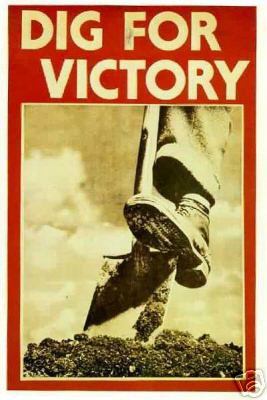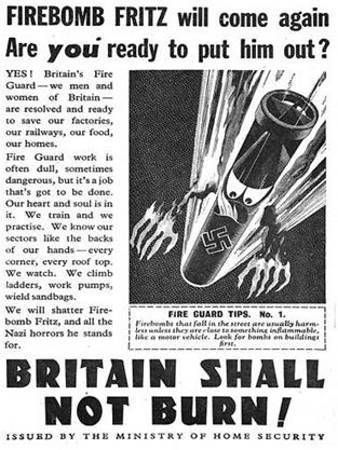Officially called Civilian protective helmet But commonly
known as the Zuckerman helmet they were Designed by professor Solly Zuckerman.
They were issued to supplementary /street fire party personal Fire watchers or Fire
guards plus on sale to the general population for 5 shillings and sixpence .
The earliest ones I have seen so far are dated December 1940 but mostly dated 1941.
They were made from pressed steel in two sizes medium and large.
The high dome of the helmet was intended to allow for dints but would still protect the
head. The liners are made of leather and webbing and are attached to the helmet with the
string threaded through the holes that completely encircle the helmet. Although they have
metal loops provided for chin straps there was no chin strap provided and
I have come across all sorts things used as chin straps .
Post war they were used by the Norweigian government as civil defence helmets,
painted yellow with a falling bombs badge on the front they are often falsely described as
war time British bomb disposal.
Unfortunately I don't own an original instruction leaflet that came with the helmets but
here are the written instructions without the diagrams.
MINISTRY OF HOME SECURITY
THE CIVILIAN PROTECTIVE HELMET
INSTRUCTIONS FOR ASSEMBLY AND FITTING
The Civilian Protective Helmet is issued unassembled in three parts - body, lining, and lace.
The steel body is in two sizes and the liner is in six sizes - i.e. Three sizes to each size of body, as follows -
The medium body (stamped M) takes linings of 6 and a half, 6and three quarters and 7.
The large body (stamped L) takes linings of 7and a quarter, 7and a half, and 7and three quarters.
Fig 1 shows the general shape of the helmet. Although the body is symmetrical in shape the
line of lacing holes is sloped so that when the lining is assembled to the body the helmet
has a front and a back. The back comes down lower to protect the back of the head.
The letters L and M stamped under the rim at the back indicates the size of the helmet body.
How to assemble the Helmet.
(I) Take a lining of the required size and a body of the size to fit the lining - see above.
(NB - It is essential that the right size of body be used with each lining size.)
It does not matter which part of the lining becomes the front or back;
but it is usual to assemble it so that the join in the headband is at the back.
(ii) There are eight pairs of lacing holes in the steel body, corresponding with the eight
loops on the lining (A 'pair' of holes means two holes close together - about 1 inch apart.
There is a space of about 2 inches between two pairs.) A loop should be placed behind and
between the two holes which form one pair, and the lace threaded alternately through the
lacing holes in the body and the loops on the lining as show in Fig. 2.
When the lacing is finished lace should be visible outside the body of the helmet between
each pair of holes, and should be invisible between the two holes which form a pair
(see Fig. 1).
(iii) When the lacing has been completed, draw the lace tight and tie it firmly in a bow.
It will be most satisfactory to form the tie inside the helmet (i.e. Alongside one of the
loops in the lining) and at the back,
where loose ends can be tucked away, and not outside the helmet, where the tie will be
more liable to come undone.
The lacing can be done with any strong piece of cord or lace of the right thickness if the
lace originally provided gets broken.
How to fit the Helmet.
The wearer of the helmet should see that it fits well. The leather band of the lining
should fit as closely as possible around the head without being too tight.
If it is too loose and the next size smaller is too tight, the lining should be padded with
layers of paper or other material inside the leather band.
When the fit around the head has been made right, the helmet should be worn to see whether
it comes down far enough, or too far, on the head.
This can be adjusted by lengthening or shortening the piece of cord which is threaded
through the webbing band at the crown of the head.
The brim at the front should be about level with the eyebrows when the helmet is worn in a
comfortable position on the head.
(Note - the cord must not be loosened so much that the head nearly comes in contact with
the steel body. People with high-domed heads may find it advisable to wear the helmet
above eyebrow level.)
Chin strap or Carrying Loops
No chins trap is provided because it is not likely to be necessary except in rare
circumstances. Nevertheless lugs are provided inside the helmet on either side through
which a piece of tape can be threaded if desired, to form either a strap
(to be worn either under the chin or at the back of the head) or a carrying loop.
The letters on the first Zuckerman helmet shown stand for Street Fire Party or Supplementary Fire Party.
The letters on the second one I am struggling with.
The M could be a place name and the V.F.P could be volunteer fire party?
It has been suggested mobile volunteer fire party. If anybody knows for sure please email me
.Rank in the Fire Guards was was indicated by one two or three black bands on a white
painted helmet. The video at the bottom right shows Fire Guards in action wearing
the Zuckerman helmet.
|
Made by brigs motor bodies |
Senior fire guards helmet made by brigs motor bodies. |
Thanks to Pete Insol for the following information about the makers mark above which does seem to be the most likely answer.
The unknown badge is the trademark of the PRESSED STEEL CO., of Cowley, Oxford. This was a joint venture with Morris Motors, and produced steel pressings for their motor cars. Incedentally, Austin also manufactured the 'Zuckerman' helmets - stamped AMC.
|
| The Fire Watcher Service was formed in September 1940 their duty's were to spot and report the fall of incendiaries and their ensuing fires. In August 1941 the watchers were reorganized into the Fire Guard. These would spot incendiary fires and battle them to the best of their ability, they could deal with an individual magnesium electron incendiary bomb by dousing them in buckets of sand, water or by smothering, if things got out of hand they would send for reinforcements from the NFS. Fire Guards were in teams of three each team would be responsible for 150 yards of street or 30 houses. They were issued with a steel helmet and a armband each and one Stirrup pump per team, the helmet was usually a Civilian protective helmet commonly known as the Zuckerman.
|
 BACK TO HOMEFRONT HELMETS AND HEADGEAR. BACK TO HOMEFRONT HELMETS AND HEADGEAR. |

